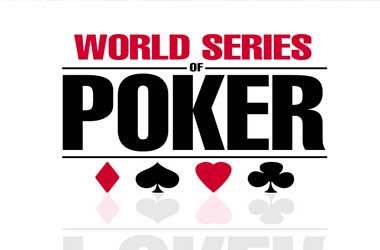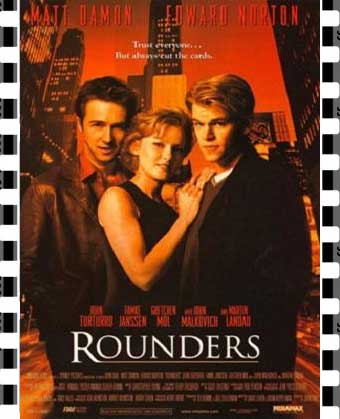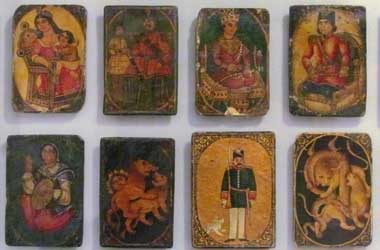Brief History of Poker

In fact, the fascinating history of poker is much more complicated, as its origins are not entirely clear and known to us.
However, poker is still a worldwide phenomenon, as around 40 million of the world population have tried playing this exhilarating casino game at least once. This number is continually increasing with the addition of online poker and poker apps.
So, if you’re interested in finding out how it got to this point, let’s go over the gripping history of poker together.
Origins of Poker
What we know as poker today is believed to have originated around 1,000 years ago. In fact, some historians claim that poker dates back to the 10th century. It is thought that this game derived from a domino-card game played by a Chinese emperor.
On the other hand, many other historians believe that poker emerged from a Persian card game called As Nas in the 16th century. This is a more common belief because As Nas was played with 20 cards, and bluffing was considered to be a significant part of the game.
Around the same time, a similar card game originated in Europe, called Primero or Primera, which involved three cards being dealt to a player and a lot of bluffing. This is also the time when the expression flush originated. Namely, the players back then called a hand of three of a kind and three of the same suit a flux.
In the 18th century, poker traveled to France and Germany, where it was known as Poque or Pochen, which ultimately means bluffing. On the other hand, it was called Brag in England.
Soon after, the French colonists brought the game to North America — more specifically to New Orleans and the surrounding area, which became part of the United States in 1803, after the Louisiana Purchase. That’s where the name poker originated, as the English-speaking settlers in the region changed the word poque to poker.
Shortly after, the settlers also adopted some of the more modern features of the game, including dealing five cards out of a 52-card deck. From New Orleans, the game traveled to different parts of the United States, especially during the Civil War. As the Union soldiers moved further south, they became more exposed to the game. It was also a common sight in Wild West saloons in frontier towns at the end of the 19th century.
This new version of poker was then taken back to Europe during the reign of Queen Victoria. After she heard a US minister explain the rules of the game, she wanted to participate as well.
In Europe, poker became more widely accepted during World War I, when American soldiers played the game. Its variations, five-card draw, seven-card stud, and, most recently, Texas Hold’em, gradually came to Europe in the 20th century.
World Series of Poker

A casino owner by the name of Benny Binion soon became a legend in Sin City and across the country, as he managed to gather some of the best world-class poker players in one place — in the renowned Horseshoe Casino.
Binion’s goal was to determine the best poker player in the world. In the first year of the tournament, the winner was declared by vote.
However, by the second year, the title of the champion went to the player who dominated the take-all no-limit hold ‘em tournament.
The first year of the tournament only hosted six participants. Nevertheless, by the mid 1980s, there were over 2,000 participants from all over the world. Today, more than 7,000 players come to Vegas for the incredible $74 million prize pool. The largest event by far was the 2006 championship, with 8,773 players participating.
Popular Culture
By the end of the 20th century, poker had become even more popular. The turnout at the tournaments, both in the States and worldwide, was quite high, and, slowly but surely, poker was finding its way into the mainstream culture.
It was featured in many television shows and movies over the years. Furthermore, numerous popular songs mentioned poker, including O.A.R.’s “That Was a Crazy Game of Poker”, AC/DC’s “She’s Got the Jack”, Ray Charles’ “Losing Hand”, and even Lady Gaga’s “Poker Face”.

The poker culture was featured on the big screen as well. For instance, Rounders, a 1998 American movie with Matt Damon and Edward Norton, depicts the poker scene down to the smallest detail. Other notable poker scenes occur in movies such as 21, Casino Royale, and Croupier.
The widespread adoption of poker by the popular culture eventually led to the game having its own hall of fame. Namely, Benny Binion founded the Poker Hall of Fame in the USA in 1979.
Online Poker

With time, graphics improved, which led to a higher interest in playing poker through software. In late 1997, beta testing for online poker started, with a select few players having the chance to try it out. In 1998, Planet Poker was created, which led to playing poker with real money online. Mike Caro founded the website and became the initial spokesman for the game. On January 7, 1998, the first real money poker game was played — a $3–$6 Texas Hold’em game.
Overnight, Planet Poker became one of the most popular websites in the world, as it was the only one where poker enthusiasts could play their favorite game. Shortly after, a site called Paradise Poker appeared and offered different poker variants — Omaha and Seven Card Stud, as well as the classic Texas Hold’em. The website dominated the market in the years to come, until other prominent poker websites appeared.
With the appearance of mobile devices, the interest in playing online poker doubled, as players could now play their favorite casino game on the go. In 2009, mobile poker revenues were $4.9 billion, which was almost double compared to 2007.
Over the years, online poker has significantly expanded. Nowadays, players are able to take part in grand tournaments and compete for millions of dollars in pool prizes. They can also participate in worldwide poker tournaments from the comfort of their homes.
Final Thoughts
When we take into account how poker has transformed compared to one hundred years ago, it is challenging to predict what the future holds for this exciting card game. The US has one of the biggest poker industries in the world at the moment, but the grey area of legality in the country prevents many players from taking up poker even as a hobby.
Luckily, poker still has a lot of room to grow, as some of the states that haven’t legalized online poker yet are looking to change that in the future. Hopefully, we can expect a positive change that will introduce poker to many prospective players.
Hi, I am the Chief Editor of top10pokersites.net, this site is dedicated to all thing poker. I have been working around the poker industry for the last 15 years, with different brands. The main purpose of this site is to keep you uptodate with the industry and offer you the best deals around.











